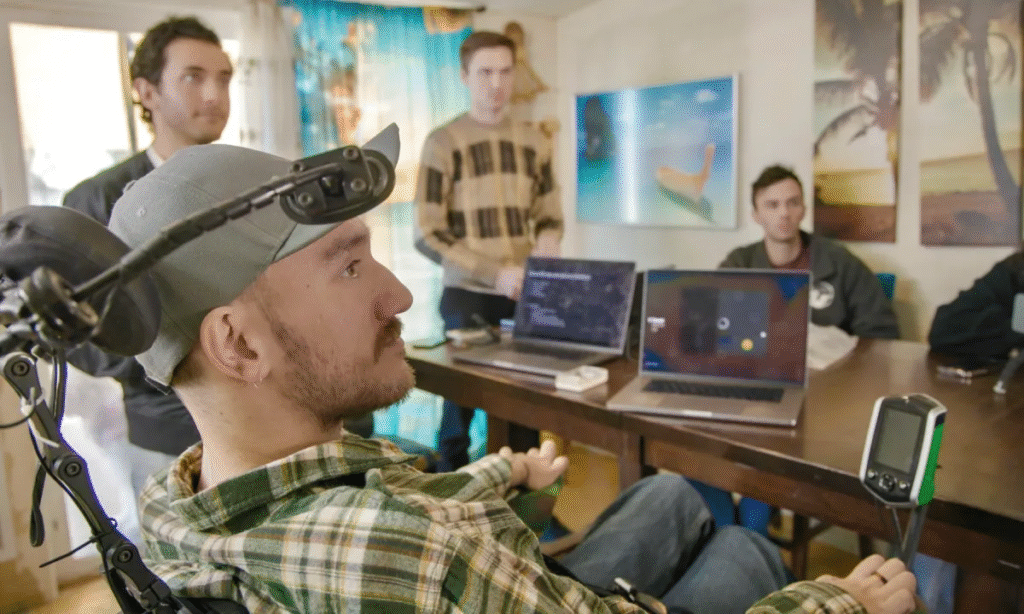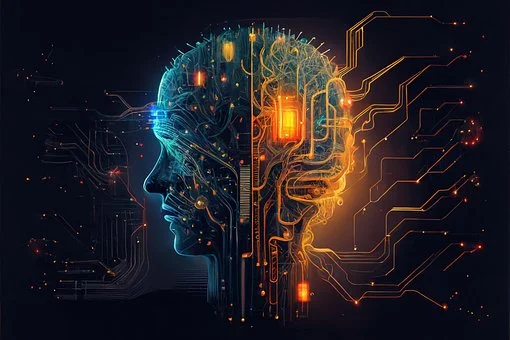
Introduction: The Dawn of Thought-Powered Tech
What if you could text with your mind, learn skills instantly, or control devices just by thinking? This isn’t sci-fi—it’s the explosive convergence of Brain-Computer Interfaces (BCIs) and AI, a revolution tech giants like Neuralink, Meta, and Synchron are racing to lead.
In this 1,000+ word deep dive, we’ll explore:
✔ How BCIs + AI work (and why 2024 is the tipping point)
✔ Elon Musk’s Neuralink vs. the competition
✔ 5 industries BCIs will disrupt first
✔ The dark side: Privacy risks & ethical nightmares
Buckle up—we’re entering the era of mind-controlled reality.
1.

How It Works
- BCI Hardware (e.g., Neuralink’s chip) reads brain signals.
- AI Algorithms decode thoughts into commands.
- Devices Respond—from smartphones to robotic limbs.
Real-World Examples:
- Neuralink’s First Human Trial: A paralyzed man plays chess with his mind.
- Synchron’s Stentrode: Lets ALS patients text without typing.
2.

| Company | Approach | Status (2024) |
|---|---|---|
| Neuralink | Invasive chip (brain implant) | FDA-approved human trials |
| Meta | Non-invasive AR headset | Prototype testing (Project Aria) |
| Synchron | Minimally invasive stent | Already in humans (FDA-cleared) |
| Blackrock | Medical BCIs for paralysis | Used in 100+ patients |
Key Differentiator:
- Invasive (Neuralink): High precision, higher risk
- Non-invasive (Meta): Safer, but weaker signal
3.

1. Healthcare
- Paralysis Treatment: Move robotic limbs via thought (Neuralink’s goal).
- Mental Health: AI detects depression patterns in brain waves.
2. Gaming & Entertainment
- Meta’s Vision: Play VR games with your mind (no controllers).
- Next-Gen Storytelling: Netflix adjusts plots based on your emotions.
3. Education
- Instant Learning: AI “uploads” skills (e.g., learn piano in minutes).
- Focus Optimization: BCIs detect when you’re distracted & pause lessons.
4. Military & Defense
- DARPA’s Projects: Soldiers control drones telepathically.
- Brainwave Authentication: Unhackable ID verification.
5. Workplace Productivity
- Think-to-Type: Draft emails 10x faster.
- AI Brain Assistants: Schedule meetings via mental commands.
4.

1. Privacy Nightmares
- Hacked Brains: Could hackers steal your thoughts?
- Corporate Exploitation: Will Meta sell your brain data to advertisers?
2. Inequality Divide
- “Neural Elite”: Only the rich get cognitive upgrades.
- Job Displacement: Mind-controlled robots replace human labor.
3. Identity & Autonomy
- AI Manipulation: Could BCIs alter your decisions?
- Legal Gray Areas: Who owns your brain data?
5.

Timeline Predictions
| Year | Milestone |
|---|---|
| 2025 | First consumer BCI (medical use) |
| 2028 | AR/VR mind-control becomes standard |
| 2035 | “Brain Apps” (download skills) |
Biggest Hurdle: Public acceptance (Would you get a brain implant?)
6.

For Early Adopters:
- Follow Neuralink/Synchron trials (human volunteers needed).
- Experiment with non-invasive BCIs (e.g., Muse headband).
For Businesses:
- Explore BCI + AI integrations (e.g., mind-controlled CAD design).
- Audit data policies (brain data is the ultimate private info).
For Regulators:
- Create “Neuro-Rights” laws (Chile already did in 2021).
Conclusion: The Next Digital Frontier
BCIs + AI could be bigger than smartphones—reshaping how we work, learn, and connect. But with great power comes great responsibility.
Key Takeaways:
- Neuralink leads, but Meta & Synchron are close behind.
- Healthcare and gaming will see the first breakthroughs.
- Privacy & ethics must be prioritized NOW.
Would you get a brain chip? Comment below! 🧠⚡










